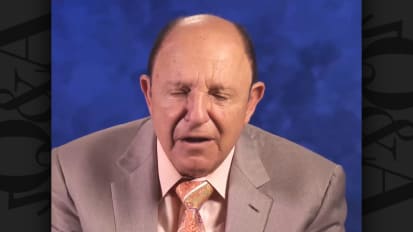Ralph DeFronzo, MD

Professor of Medicine
Chief of the Diabetes Division
The University of Texas Health Science Center at San Antonio
San Antonio, Texas

Professor of Medicine
Chief of the Diabetes Division
The University of Texas Health Science Center at San Antonio
San Antonio, Texas
Related Videos
 Video
Video
What dosing considerations should we keep in mind for liraglutide based on the results of the LEADER trial? And what are the implications for insulin-GLP-1 RA combination therapy?
 Video
Video
How should the front-line clinician treating T2D patients translate the results of the LEADER trial into clinical practice? Have these results prioritized GLP-1 RAs in the T2D treatment pathway?
 Video
Video
How might the results of LEADER impact the prioritization of GLP-1 RAs as foundational agents for T2D, either as stand-alone agents or in combination with SGLT2 inhibitors? Or with long-acting basal insulin?
 Video
Video
Can you compare the results, time lines, and insights gleaned from the LEADER trial with liraglutide, a GLP-1 RA, to those reported for EMPA-REG, which evaluated the effectiveness and safety of an SGLT2 inhibitor on CV risk?
 Video
Video
What pathophysiological and mechanistic factors associated with the GLP-1 agonist liraglutide might explain the reduction in overall mortality, MACE, and CV mortality reported in the LEADER trial?
 Video
Video
What is the rationale of combining GLP-1 RAs and long-acting insulin into fixed ratio combination agents?
 Video
Video
Within the class of GLP-1 RAs, are there important comparative distinctions—dosing, PK/PD, side effects, weight loss, lipid profiles, and BP—that have clinical relevance that you believe should be highlighted? How do they differentially affect PPG?
 Video
Video
What attributes—mechanistically, metabolically, and physiologically—of GLP-1 RAs, in your mind, support their position as foundational agents across a broad spectrum of patients with T2D?